Whether your carnivorous plants are indoors or you live in an area where there are fewer bugs available, you may have decided it’s necessary to begin supplying them with some alternate food sources. However, effectively feeding a carnivorous plant varies depending on what kind it is, so let’s take a look at how to feed some of the more common types to prevent them from missing out on important nutrients.
Butterworts (Pinguicula)
Butterworts do a pretty good job of catching food on their own. If they seem to be having trouble though, sprinkle some fish food or bloodworms on a sticky leaf or two every 2-3 weeks. Try to keep food away from the sensitive crown though to minimize bacteria and mold growth.
Some butterworts will enter a succulent phase during certain times of the year. They will stop producing sticky leaves and the plant will usually shrink in size. There’s no need to feed butterworts during this time.
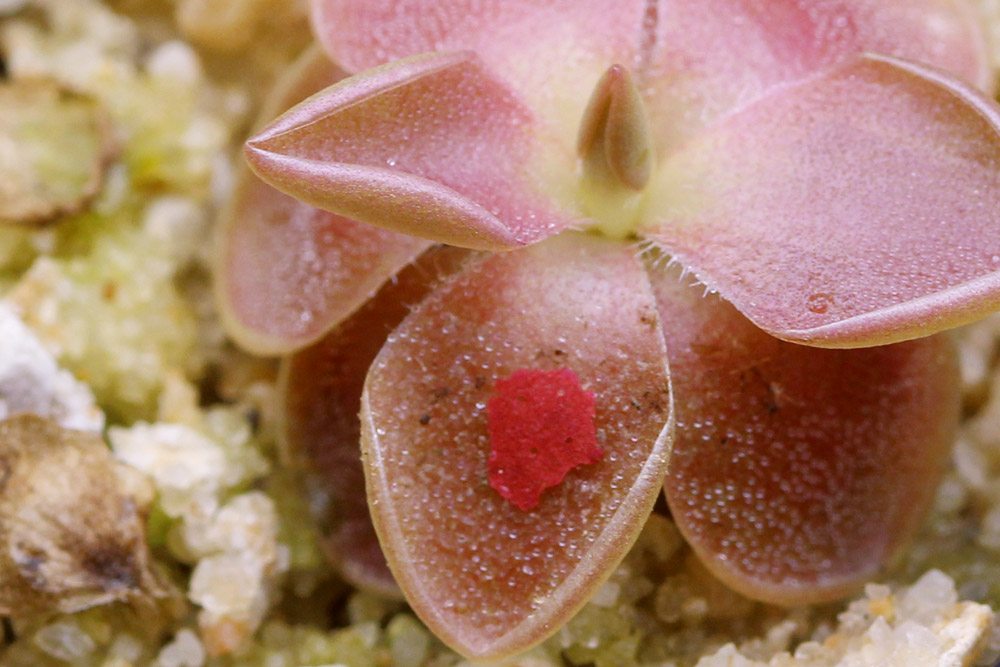
Butterwort with fish flake food
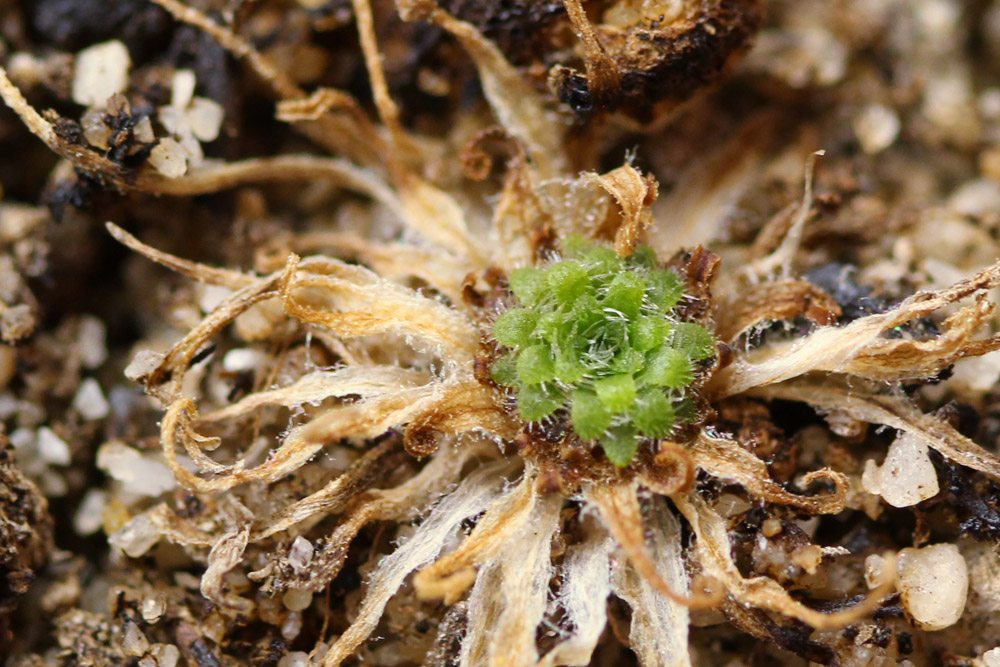
Butterwort in succulent phase
Pitcher Plants (Nepenthes, Sarracenia, & Cephalotus)
Pitcher Plants are probably the easiest carnivorous plants to feed. During their active growing season, drop bugs, fish food, or fertilizer pellets in a few of the pitchers every 2-3 weeks. If the pitchers are dry, squirt water in them with a pipette or eyedropper after feeding, otherwise they won’t be able to absorb the nutrients. If you move plants after the pitchers are full, do so carefully. Partially digested food from a spilled pitcher doesn’t smell the best.
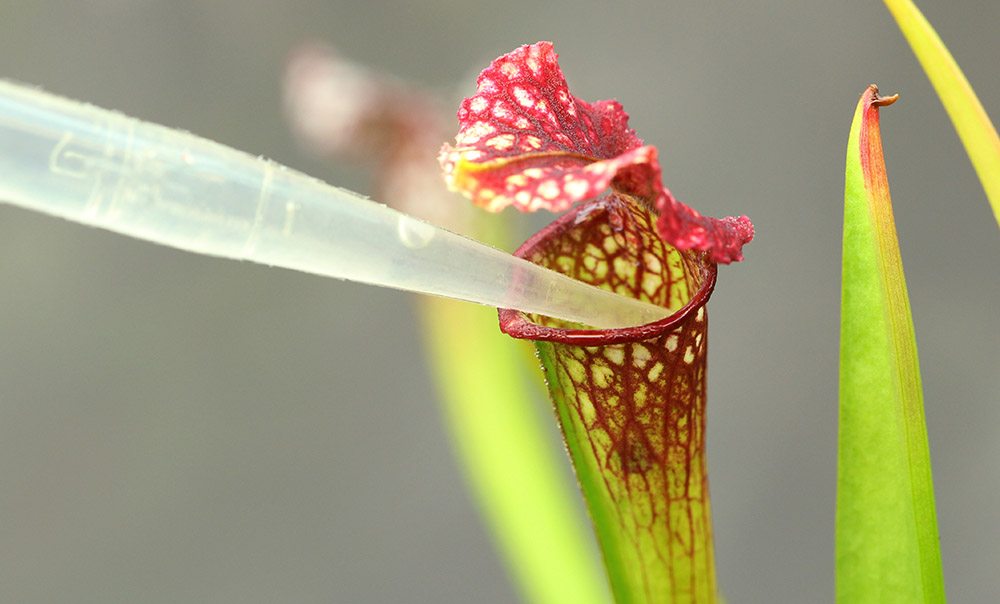
Adding water to a young Sarracenia pitcher
Sundews (Drosera)
Like butterworts, sundews do a pretty good job of catching food on their own. If they seem to be struggling though, feed a few dewy leaves dry fish food or bloodworms every 2-3 weeks. If you’re in a hurry, store the food in an old spice shaker and give it a few shakes over the plant occasionally. Just be careful not to pour too much out or get food near the crown of the plant.
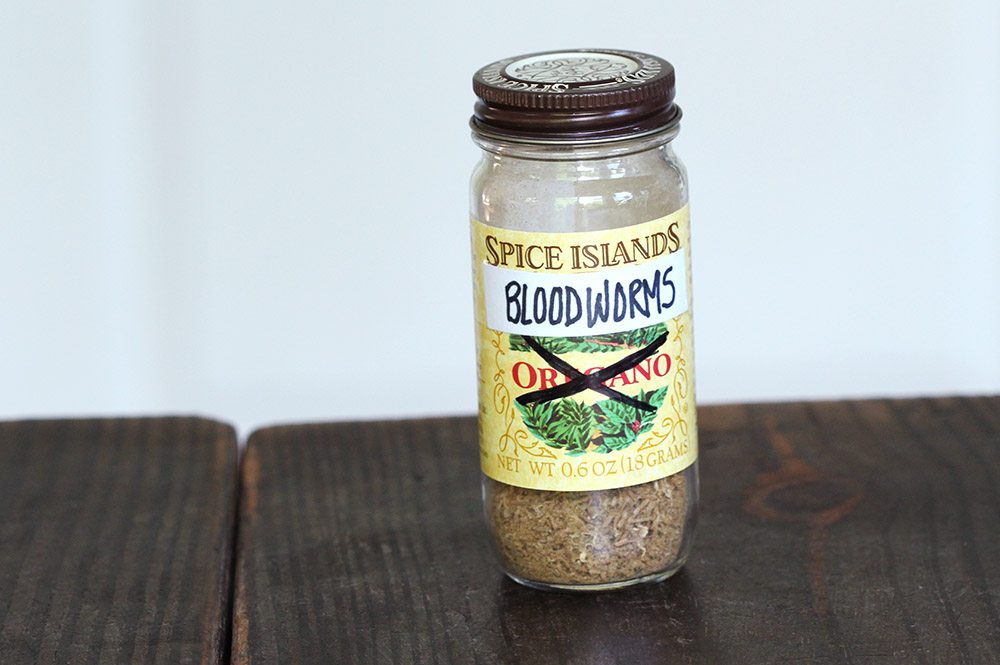
Mmm Bloodworms
If you’d like a more targeted approach, use a pair of pointed tweezers to stick food on the tentacles. After feeding, most sundews curl their leaves around prey within about 20 minutes. If a sundew doesn’t have dew on its tentacles, this could be a sign that it’s stressed. Only feed it after the dew returns.
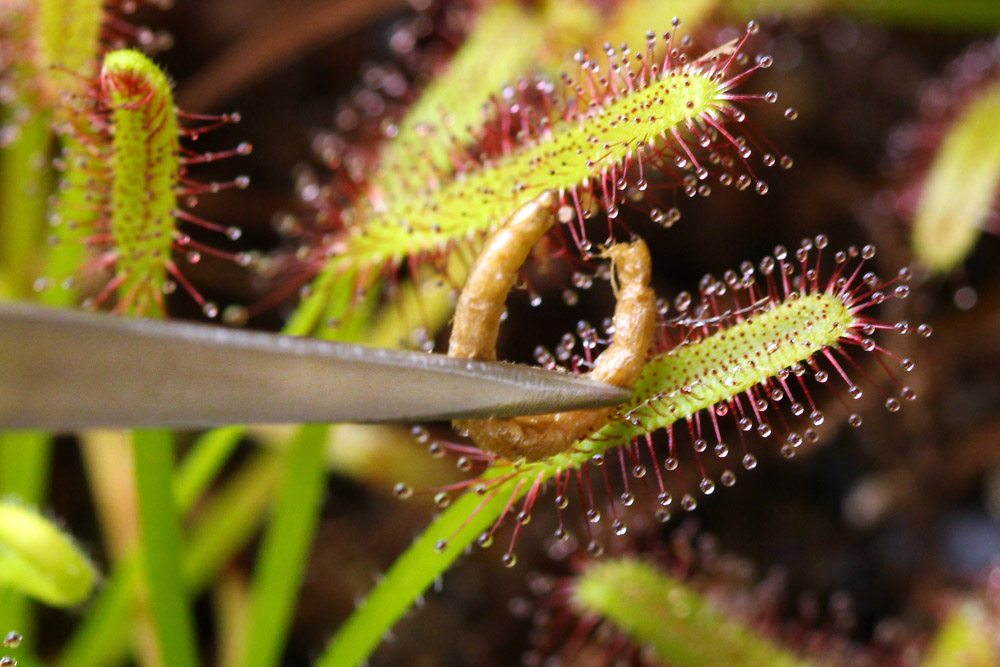
Tweezer feeding D. capensis a bloodworm
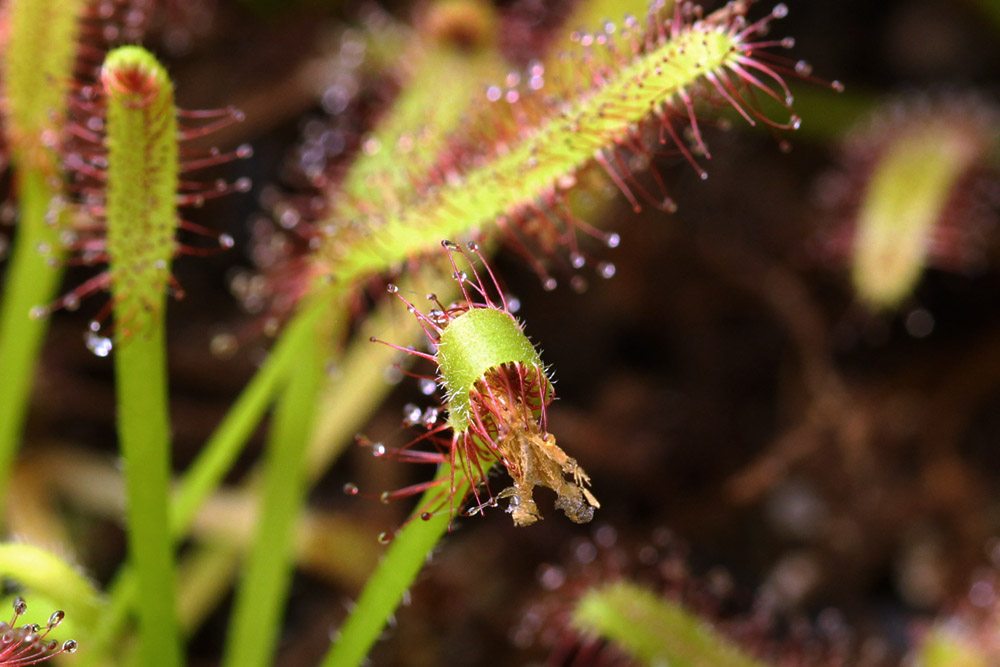
Leaf curl after about 20 minutes
Venus Flytraps (Dionaea)
Venus flytraps are some of the most fun carnivorous plants to feed! Using tweezers, gently brush a bug, damp fish food, or bloodworms against the trigger hairs inside one of the traps. The trap will snap shut after a couple of strokes, getting a mouthful of food. The amount of food you give each trap depends on its size. Generally, the size of the food should be about 1/4 of the size of the trap.
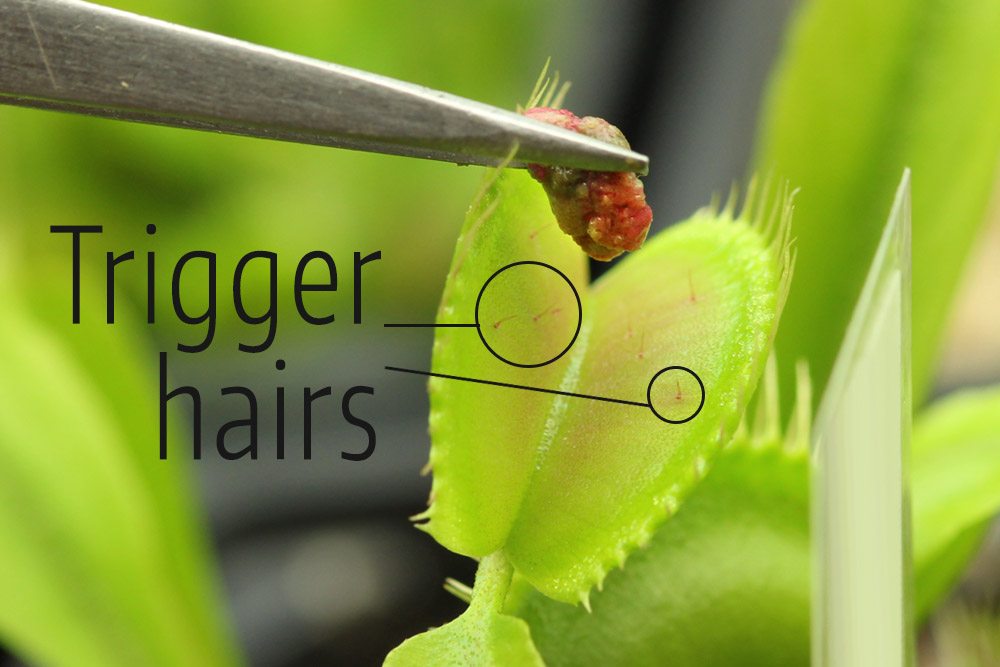
Tweezer feeding a Venus flytrap fish flakes
For food that isn’t fed live, gently massage the trap after it has snapped shut. This mimics a bug moving inside and stimulates the trap to seal more tightly and produce extra digestive enzymes. Learn more about this amazing process here. Feed a few traps every 2-3 weeks during the plant’s active growing season.

Massaging a trap to stimulate digestion
So Now What?
This guide gave a brief overview of how to feed carnivorous plants but if you haven’t done so already, check out our article: What to Feed Carnivorous Plants. It covers a variety of suitable food sources and alternatives to bugs. Thanks for reading and feel free to leave questions and comments below, we’d like to hear from you!


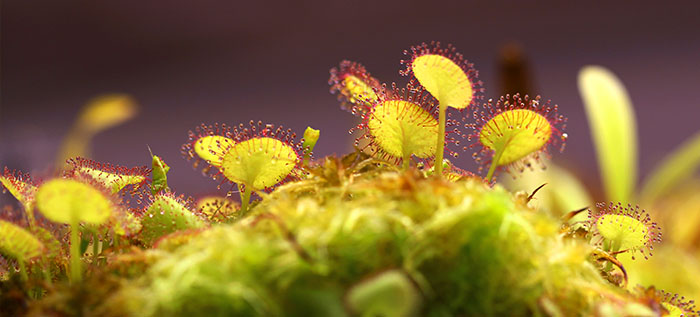

I was wondering if you bugs you feed them have to be alive? Thanks, Robin
In most instances the bugs don’t need to be alive. It can be helpful in the case of Venus flytraps though as it provides continued stimulate of the trigger hairs which aids in the digestive process.
Some of these directions are not accurate. It is not necessary to fertilize nepenthes and especially not recommended to drop fertilizer pellets in the pitchers. You may kill the plant.
Also, use ONLY distilled or rain water to water the pot and keep moist and several tablespoons of distilled on each pitcher not letting them dry out. I have mine hanging above my orchids which are on pebble beds kept wet to ad humidity to the area. I take to sink and soak the pot substrate with distilled h2o once a week and also put distilled h2o in each pitcher same time. I catch the errant wandering live bug and will alternate which pitcher I put it in. When no live bugs around, every few months, I’ll put a small freeze dried cricket in each pitcher, careful to NOT overfeed. The nutrients in the bugs are sufficient for the plant and they DO NOT REQUIRE fertilizer.
Hi Thomas, thank you for your comments. I’m sure some of your techniques would be helpful to other growers as well. The directions to add fertilizer pellets to Nepenthes pitchers as one method of feeding is accurate though. We have used this method for several years with success as have other growers. It is useful in situations where the grower may not have/want to use bugs for various reasons, or would like to supplement a bug diet. The important thing is to not overfeed with the fertilizer since the nutrients are often more concentrated than what would be readily available from a bug.
Thank you again!
– The Curious Plant Team
Hey I currently use maxsea in the pitchers of my cephalotus but it seems if u get some of the liquid on the teeth or on side on accident it’s leaving a white residue behind is this normal or is my jug of maxsea goin bad
Hi Matthew, hmm it is hard to say. It could be time to mix a new batch of Maxsea depending on how long it’s been mixed in the jug although it typically has fairly long shelf life if stored in a cool, dark place. It could also be that some type of bacteria, fungus, or other contaminant made its way into the jug and is leaving the residue as well.
Hi, I’ve got a Nepanthes pitcher, has since this summer. (I’m also new to carnivore plants) in the last week I’ve noticed one leaf has got a very, very small amount of a yellow appearing. I’ve not changed my watering, regularly turn the plant about for the best sunlight/shade, an I do give little showers. So,,,, Where I’m I suddenly going wrong?? or, do these beautiful plants have a dormant period?
Hi Shirley, Nepenthes do not have a dormancy period and it’s hard to say for certain what the yellow spot could be from. It could range anything from that particular leaf is nearing the end of its life and starting to die away or got just a little too much water, to some type of nutrient deficiency or disease. If this is the first time it’s happened and doesn’t spread to other leaves, it’s probably nothing to be too concerned about. If it starts to spread to other leaves though, you’d want to start looking at modifying your conditions based on the some of the possibilities above.
Too much water or not enough light. Keep the substrate simple, pearlite and spagnum moss is sufficient. To produce more pitchers keep humidity high. Add a table humidifier to the area you keep your plants. A grow light, even the cheap LED ones off Amazon can supplement if you have a low light situation. Don’t worry about feed too much until you get these things right! Good luck!
Had a pitcher for about 2 months and i have noticed some of the small pitchers are shrivelling up on the lids at the top,am i doing something wrong,cheers Les
Hello! It could be that the plant is still settling in and adjusting to your conditions or if the humidity is too low this can cause the pitchers to dry out faster than normal as well.
Are freeze-dried mealworms recommended for Sundews and Flytraps?
Freeze dried mealworms can work too as long as the pieces aren’t too big.
I have used crushed fish pellets, crush them in a stone grinder w mortar and pestle.. then added water to them then applied with a medicine dropper, but in the video theirs looks clear, mine is always a bit brown in color. Do I need to have more water in the ground fish pellets or does it matter if it’s a brownish color or clear?
Hi Thomas, the color of the mixture doesn’t matter too much as long as you’re applying the mixture to a spot on the plant where it can come in contact with the digestive glands.
Perfect Thanks for the reply I’m assuming only when dew is present
Anytime Thomas! Yes, you would typically feed when dew is present in the case of sundews and butterworts.
I threw away my pkg too soon! Don’t know what kind of fly trap I have!
Hi Kathleen, if you would like to send us a message via our contact page with your billing name/address, we could try to look up the order for you to determine the identity. Thank you!
Why won’t my picture close after I feed it? I’ve tried “stimulating” it too. I was told it won’t digest unless it closes.
Hi Merry, thanks for your question. Pitcher plants do not close after they have been fed. A pitcher plant utilizes what is called a pit fall trap where a bug falls into the pitcher and can’t climb out due to the slippery walls. Eventually the fluids in the pitcher will drown and digest the prey. Venus flytraps on the other hand must have the trap close around the prey and be stimulated in order for digestion to happen.
Hi,
I’m new to carnivorous plants, just got a pitcher plant and I’m super excited! My question is, do I feed each pitcher or if one eats will they all survive since they share roots?
Thanks!
Hi Kristin, congrats on your new pitcher plant! It’s not necessary to feed every pitcher on the plant since the nutrients given to one will go to benefit the whole plant. If the pitchers are bigger or it is a larger plant it can be beneficial to feed more pitchers though just to make sure the plant is getting enough nutrients. Thank you!
Hello,
I have the nepenthes pitcher plant. It’s doing really well. Over the summer I had it outside which it loved. Now, I’ve brought it back indoors in my front window
I want to feed it meal worms. Am I to feed each one a worm, or a few?
Hello! The number of meal works would depend on the size of the pitchers. If the pitchers are small, one meal worm would probably be best but if the pitchers are larger they would be ok with a couple at a time.
Thank you for the very interesting information.
Please tell me how to grow the VFT. It is difficult to feed small VFTs or VFTs without trigger hair, so we plan to spray the leaves with diluted fertilizers and revitalizing agents.
The questions are as follows.
1. Usefulness of spraying diluted fertilizer or vitalizing agent on the surface. Place to spray (TRAP only, whole leaf). Please tell me about.
2. Can the diluted fertilizer be absorbed even when the trap is open?
Hi Atsushi, Yes a diluted fertilizer like Maxsea sprayed on the leaves of the plant can be beneficial for feeding small VFT. The fertilizer can be absorbed even if the traps are still open.